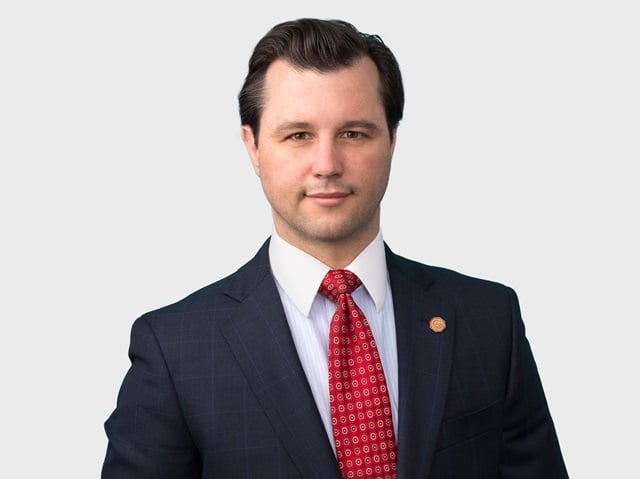Water is a vital economic and natural resource. Many communities across the U.S. face significant and often unique challenges with water scarcity and infrastructure. In episode 7 of the Notice & Comment podcast, three of our lawyers recap various water issues facing communities, including highlighting recent discussions from the 2018 One Water Summit and Indiana Delegation Roundtable. Topics include aging infrastructure, revenue and rate tension, annexation and privatization considerations, and reuse possibilities.
The Challenges
Water poses unique and varying challenges across the U.S. Many older communities, such as those concentrated in the Midwest, Northeast and Northwest, face huge funding liabilities for aging infrastructure and to address combined sewer overflows. For example, Indianapolis alone is spending over $1 billion to upgrade its combined sewer system. In the West, accessibility and availability of water are the top concerns, while the South is experiencing flooding issues.
A Finite Resource
Given the lack of a nationwide water policy, states are experimenting with their own approaches to water issues. In Indiana, 2018 legislation established a Water Task Force to consider challenges to the state’s drinking, wastewater and stormwater systems. The group is seeking to quantify Indiana’s water inventory and plan for the long-term security of Indiana’s water access. While the Midwest historically has had a plentiful water supply, a drought in 2011-12 and water contamination issues in Flint, Michigan, have emphasized the importance of water policy and regulation. As Indiana expands its manufacturing base, many areas may lack sufficient water to support large industrial operations that are desired in critical areas, adding to the sense of urgency.
While the federal government funds about 25 percent of road and bridge infrastructure, it provides only about 4 percent of funding for water utilities.
Revenue and Funding
Utilities continually face revenue challenges. As consumers become more efficient in our water use, overall revenue to maintain these utilities decreases. In some large cities, population shrinkage is cutting revenue. Meanwhile, utilities’ overhead does not decline – they must maintain their infrastructure, pay bills and pay staff even when consumers decrease.
Water infrastructure funding has historically been the responsibility of state and local governments. While the federal government funds about 25 percent of road and bridge infrastructure, it provides only about 4 percent of funding for water utilities. Meanwhile, publicly owned utilities often face political pressure to keep rates low. Utilities are an unseen cost in most consumers’ budgets (because rates are low) and infrastructure upgrades are an unseen benefit – so rate increases are felt strongly, and consumers often do not recognize the need or value.
Regulation
Many utilities are regulated by both state and local governments. Multiple layers of approval make changes and upgrades more complex. Varying regulations across a state often prevent a consistent approach to solutions.
The Potential Solutions
- Privatization. Indiana has been at the forefront of public-private partnerships for its water utilities. For example, cities such as Indianapolis and Westfield, Indiana, have transferred ownership of water and wastewater utilities to private entities. This solution provides new resources and funding opportunities to the utility along with greater opportunity for the employees.
- Annexation. As urban sprawl proliferates and utilities extend far beyond corporate boundaries to service developing areas, municipalities may consider annexing newly developed areas to bring new ratepayers into their system.
- Water reuse and reclamation. Cities like Chicago are processing their waste and drawing out the phosphorus for other uses. Many states are implementing soil and water conservation programs for agribusinesses. Some companies are creating mini wastewater facilities on their properties to avoid the dangers of not having water access or paying higher rates for water use. The challenge of this approach is that it pits industry against consumers, because these companies are spending less on water, but the utilities’ operating costs do not decrease – and consumers must pick up the slack.
Conclusion
The One Water Summit opened the door to fascinating and important conversations about water use, considering all sides of the issue. Later this year, Faegre Baker Daniels will reconvene the Indiana Delegation Roundtable participants to continue the conversation.
“Notice & Comment: Faegre Baker Daniels Environmental Podcast” showcases attorneys from Faegre Baker Daniels’ offices nationwide and guests as they discuss cutting-edge issues in environmental law. Topics cover the spectrum of federal and state environmental laws, including the Clean Water Act, Clean Air Act, Endangered Species Act, NEPA, SDWA, CERCLA, RCRA and TSCA – all from a practitioner’s perspective.
Note: The opinions expressed in this podcast do not necessarily reflect the views of Faegre Baker Daniels or our clients.
.svg?rev=a492cc1069df46bdab38f8cb66573f1c&hash=2617C9FE8A7B0BD1C43269B5D5ED9AE2)


